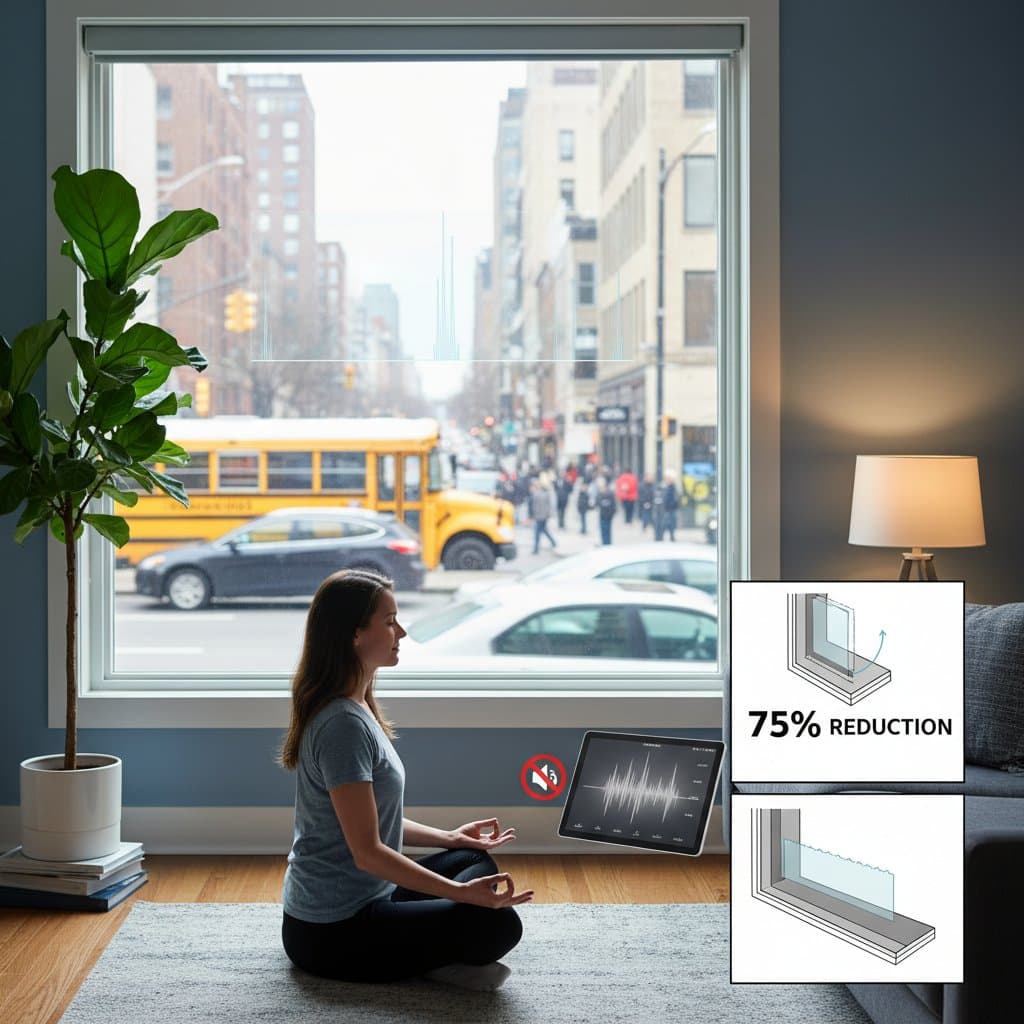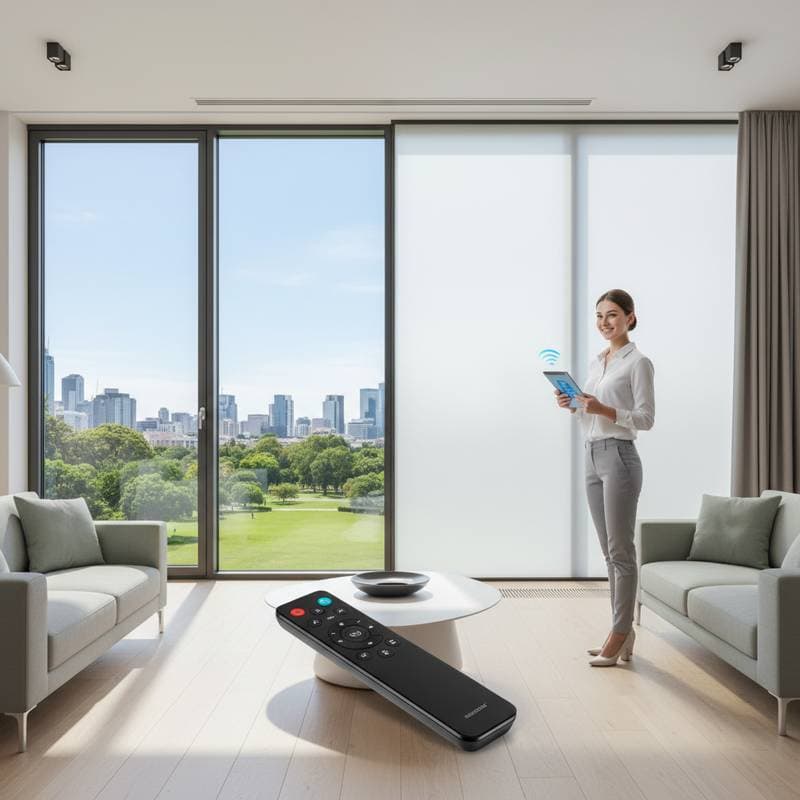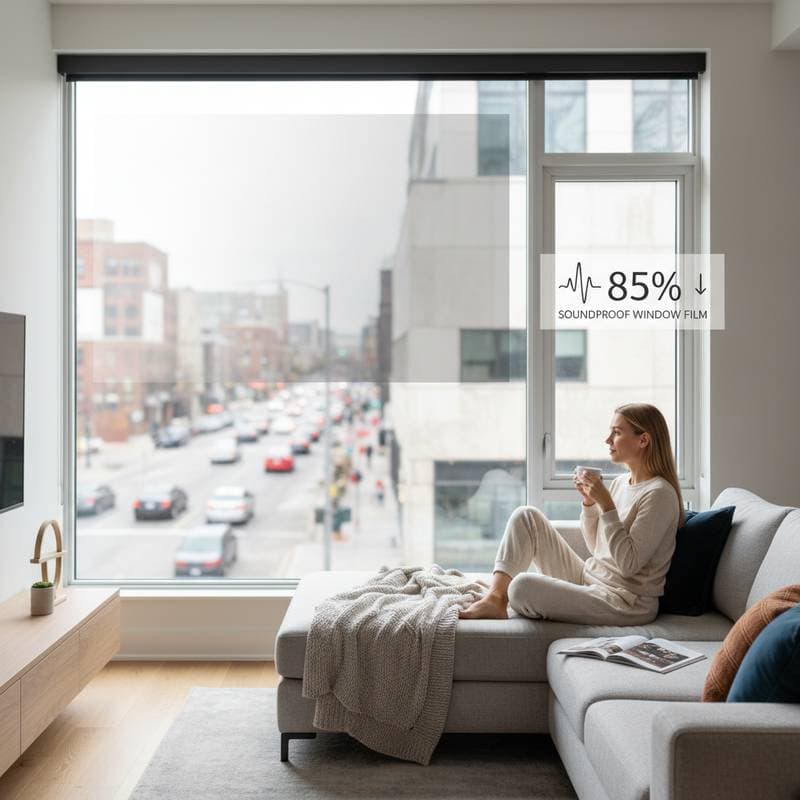Reduce 75% of Noise Without Window Replacement
Street noise, barking dogs, and loud neighbors often prevent relaxation in the home. Numerous homeowners encounter sound infiltration through windows. While complete window replacement diminishes noise, the expense reaches thousands of dollars and involves significant disruption. Soundproof window inserts offer a solution that eliminates up to 75 percent of noise while preserving existing windows.
Understanding Soundproof Window Inserts
Soundproof inserts consist of clear acrylic or glass panels designed to fit securely within the existing window frame. These panels form an airtight seal to block sound waves from entering the interior space. They function as an additional insulating layer without changing the home's exterior or interior appearance. Options include permanent installations or removable designs to suit individual preferences.
Inserts leverage the current window frame, eliminating the need for new trim, external modifications, or permits. Installation typically requires less than one hour per window for most homeowners.
Noise Reduction Levels and Pricing Details
Noise reduction ranges from 50 to 75 percent, influenced by insert type, window condition, and sound characteristics. Low-frequency traffic rumble demands thicker inserts compared to high-frequency sounds like birdsong or voices.
| Type of Insert | Average Cost per Window | Typical Noise Reduction | Key Benefit |
|---|---|---|---|
| Acrylic Magnetic Insert | $250 to $450 | 60% to 75% | Superior seal, easy removal |
| Glass Compression Insert | $300 to $600 | 65% to 80% | Robust barrier, long-lasting |
| DIY Acrylic Panel | $100 to $250 | 40% to 60% | Economical choice |
Costs cover materials and basic setup. Professional services add $50 to $100 per window, although self-installation proves simple for many.
Comparing Inserts to Full Window Replacement
Window replacement expenses range from $800 to $2,000 per unit, based on materials and frame status. Such upgrades enhance energy efficiency and visual appeal, yet deliver only 35 to 50 percent noise reduction in standard double-pane models. Inserts achieve superior results at approximately half the cost.
Mark Diaz, a licensed contractor in Portland, states, "Most homeowners are surprised when they find out how much sound leaks through tiny gaps. Inserts address that air leakage directly, which often makes them more effective than total window replacement."
Mechanics of Soundproof Inserts
Sound propagates through air, and a secure seal minimizes transmission. Inserts establish a small air gap between the panel and original glass, serving as an acoustic buffer. Greater insert thickness and air space enhance absorption of sound before it reaches the room.
Optimal configurations feature a one-inch air gap paired with a quarter-inch acrylic panel. Acrylic offers lighter weight than glass while maintaining strong acoustic performance. Laminated glass variants further suppress vibrations for enhanced quietude.
Factors Influencing Effectiveness
Performance varies based on key elements:
- Window Condition: Address cracks or seal failures in existing windows prior to insert placement.
- Frame Material: Vinyl and wood frames insulate better than aluminum.
- Noise Frequency: Thicker inserts suit low-frequency sources like traffic; airtight seals handle high frequencies.
- Room Acoustics: Hard surfaces amplify echoes, so incorporate curtains or rugs to complement inserts.
- Installation Precision: A flawless seal maximizes benefits; minor gaps diminish outcomes.
Financial Breakdown: Inserts Versus Replacement
| Project Type | Cost Range (per window) | Average Noise Reduction | Installation Time |
|---|---|---|---|
| Soundproof Insert | $250 to $600 | 60% to 80% | About 1 hour |
| Standard Double-Pane Window | $800 to $1,200 | 40% to 55% | 2 to 3 hours |
| Triple-Pane Window | $1,200 to $2,000 | 65% to 75% | 3 to 4 hours |
This comparison highlights inserts' value in delivering similar noise control with reduced expense and effort.
Step-by-Step Installation Guide
Homeowners handle insert installation with ease. Follow these steps:
- Precise Measurement: Gauge the interior frame dimensions for a secure fit, aiming for accuracy within one-eighth inch.
- Surface Preparation: Clean the frame thoroughly to promote adhesion of seals or hardware.
- Hardware Attachment: Secure magnetic strips, compression channels, or screws as specified by the system.
- Panel Placement: Insert the panel and verify an airtight connection.
- Leak Verification: Operate the window and assess for sound penetration; make adjustments as needed.
Basic tools suffice for completing one window in under an hour. Professionals assist with large or complex setups like bay windows.
Additional Insulation and Comfort Gains
Inserts enhance thermal performance through the air gap that impedes sound. This setup curbs heat loss, leading to decreased heating and cooling expenses. The barrier also eliminates drafts and moisture buildup.
During winter, inserts retain interior warmth. In summer, they limit external heat influx. These advantages position inserts as a multifaceted upgrade for home efficiency.
Upkeep and Longevity
Routine care involves wiping panels with a soft cloth and mild cleaner to prevent scratches. Inspect seals periodically to maintain airtight integrity. Quality inserts endure 10 to 20 years with proper attention.
For removable types, store panels flat away from direct sunlight. Replacement seals remain affordable and accessible.
Scenarios for Expert Assistance
Seek professional input for:
- Large or irregularly shaped windows
- Preservation rules in historic properties
- Intense low-frequency noise from trains or highways
- Challenges in securing optimal seals
Experts provide accurate measurements and tailored material suggestions. Some services include pre- and post-installation acoustic evaluations.
Steps to Implement Soundproofing
Persistent traffic or neighborhood sounds warrant consideration of inserts for effective relief. These solutions diminish up to 75 percent of noise, cut energy use, and elevate living comfort minus replacement costs.
Identify primary noise sources and inspect windows for defects. Select an insert compatible with your frames and sound profile. Proceed with meticulous measurement and sealing to realize immediate serenity. Self-installation or expert help both yield a noticeably quieter residence.






